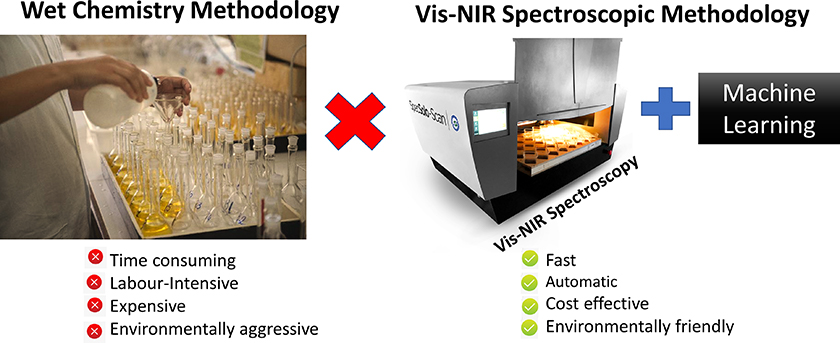Why to Use Visible-Near Infrared Spectroscopy to Determination of Soil Organic Matter
Millions of soil analyses are performed every year around the world to increase crop yields. However, the two main conventional methodologies to determine the SOM (Walkley–Black and dry-combustion) are time-consuming and expensive, and hence are not suitable for use on a large scale. Also, the Walkley–Black method is damaging to the environment. Therefore, why could use visible-near infrared spectroscopy?
The Walkley–Black method is damaging to the environment, generating residues that require treatment, and, therefore, is not suitable for sustainable agricultural practices. As an alternative to the traditional methods, visible-near infrared (vis-NIR) spectroscopy can provide fast, low-cost and accurate results for SOM analyses in an environmentally friendly way. Also, the methodology is non-destructive and does not require additional sample preparation. A comparison between the two methodologies is illustrated below figure.
The reseacher robustness presented by the proposed methodology involving vis-NIR spectra and machine learning has created high expectations for the possibility of mitigating/eliminating the use of heavy metal reagents in soil fertility analysis. Also, the methodology has potential to be used as a replacement for the traditional method in the future. Knowledge of soil fertility, supported by a green analytical methodology, could pave the way for increasing sustainable agricultural productivity.
As the key of soil analysis experiment, near-infrared spectroscopy is very important. Optosky recommend ATP8600 which low cost NIR spectrometer covers 900-1700nm, small size and could be used as part of the machine's near-infrared modular better.



















Comments: 0
No comments